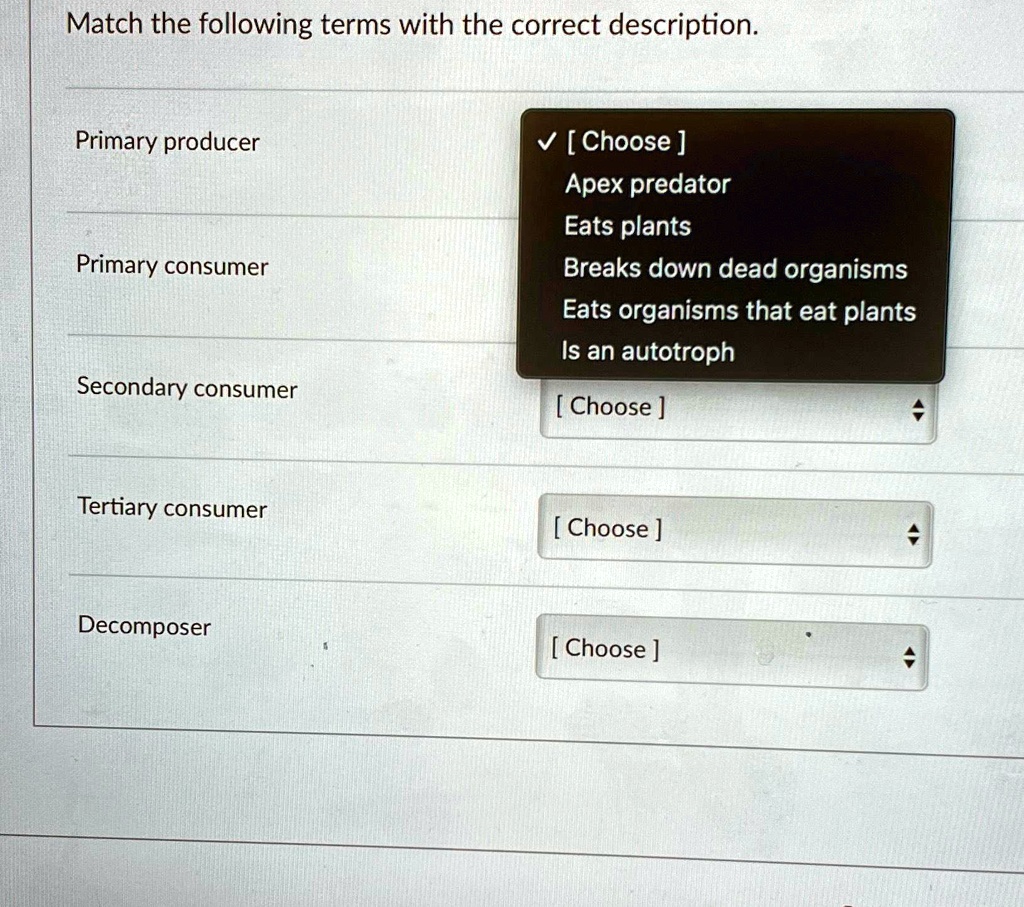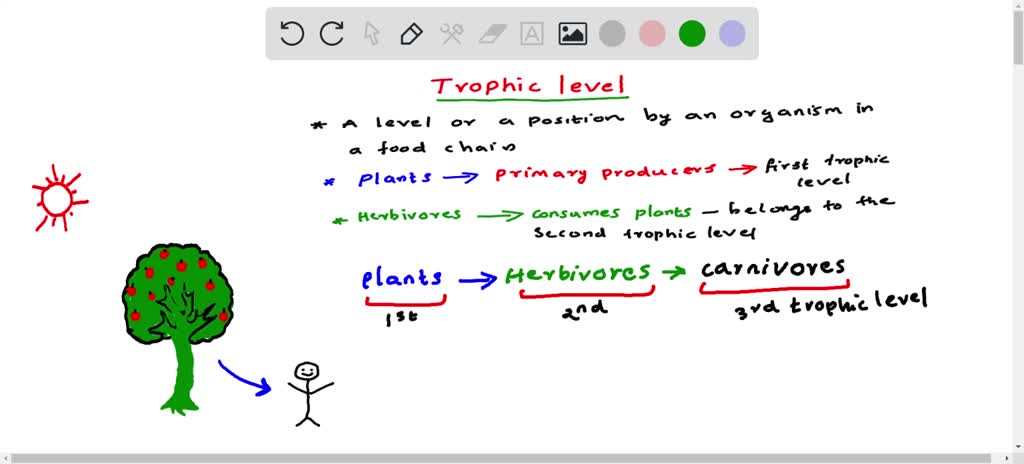Trophic Levels Producer Primary Consumer Secondary Consumer Tertiary Consumer Decomposers
Solved Forest Food Chain Sun Primary Secondary Tertiary Tertiary If you have any questions please ask in the comments. ⬇︎⬇︎⬇︎⬇︎⬇︎⬇︎⬇︎⬇︎⬇︎⬇︎⬇︎⬇︎⬇︎⬇︎⬇︎⬇︎⬇︎⬇︎⬇︎⬇︎⬇︎⬇︎⬇︎⬇︎⬇︎ 🖥 visit our website ilearneasy.co.uk more. we hope you enjoyed this video!. The links between trophic levels are key to keeping ecological balance, showing the complicated relationships among producers, consumers, and decomposers in ecosystems.

Solved Match The Following Terms With The Correct Description Primary There are five trophic levels in a food chain. they are listed below with examples and food sources. The four levels in this food chain are primary consumers, secondary consumers, tertiary consumers, and finally decomposers or phytoremediators. if you have any questions, don’t be shy, and make sure to ask one in our comment section below. A trophic level is the group of organisms within an ecosystem which occupy the same level in a food chain. there are five main trophic levels within a food chain, each of which differ in their nutritional relationship with the primary energy source. The trophic level of an organism is the number of steps it is from the start of the chain. a food web starts at trophic level 1 with primary producers such as plants, can move to herbivores at level 2, carnivores at level 3 or higher, and typically finish with apex predators at level 4 or 5.

Solved Which Trophic Level Are These Species Primary Producers A trophic level is the group of organisms within an ecosystem which occupy the same level in a food chain. there are five main trophic levels within a food chain, each of which differ in their nutritional relationship with the primary energy source. The trophic level of an organism is the number of steps it is from the start of the chain. a food web starts at trophic level 1 with primary producers such as plants, can move to herbivores at level 2, carnivores at level 3 or higher, and typically finish with apex predators at level 4 or 5. An organism’s trophic level is determined by the number of steps it is from the beginning of the food chain. for example, plants are on the first level, the herbivores that eat them are on the second, and the carnivores that eat those herbivores are on the third. The trophic level defines an organism's position in the food pyramid, which typically consists of primary producers at the base (photosynthetic plants), followed by primary consumers (herbivores), secondary consumers (omnivores), tertiary consumers (carnivores), and finally scavengers and decomposers at the top. Identify and describe the levels of the pyramid: producers, primary consumers, secondary consumers, tertiary consumers. understand the role of decomposers. know that about 10% of the energy from each level reaches the one above. In an ecological pyramid, the various trophic levels are primary producers (at the base), consumers (primary, secondary, tertiary, etc.), and predators (apex). there are essentially two major types of organisms based on their feeding mode:.

Question Chegg An organism’s trophic level is determined by the number of steps it is from the beginning of the food chain. for example, plants are on the first level, the herbivores that eat them are on the second, and the carnivores that eat those herbivores are on the third. The trophic level defines an organism's position in the food pyramid, which typically consists of primary producers at the base (photosynthetic plants), followed by primary consumers (herbivores), secondary consumers (omnivores), tertiary consumers (carnivores), and finally scavengers and decomposers at the top. Identify and describe the levels of the pyramid: producers, primary consumers, secondary consumers, tertiary consumers. understand the role of decomposers. know that about 10% of the energy from each level reaches the one above. In an ecological pyramid, the various trophic levels are primary producers (at the base), consumers (primary, secondary, tertiary, etc.), and predators (apex). there are essentially two major types of organisms based on their feeding mode:.
Comments are closed.